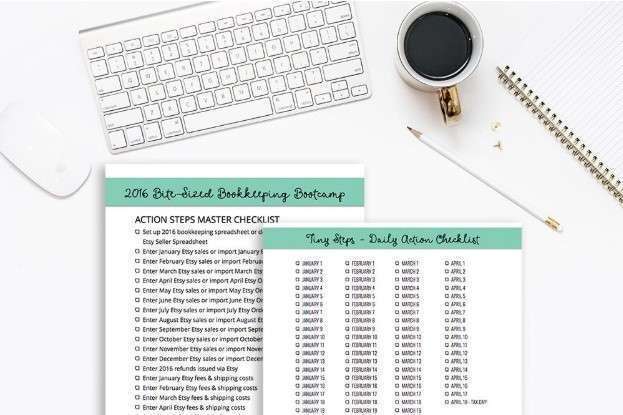Just as each product or service has its own contribution margin on a per unit basis, each has a unique contribution margin ratio. As you will learn in future chapters, in order for businesses to remain profitable, it is important for managers to understand how to measure and manage fixed and variable costs for decision-making. In this chapter, we begin examining the relationship among sales volume, fixed costs, variable costs, and profit in decision-making. We will discuss how to use the concepts of fixed and variable costs and their relationship to profit to determine the sales needed to break even or to reach a desired profit.
How do you calculate the contribution margin from EBIT?
It’s also a cornerstone of contribution margin analysis, giving enormous insight into a business’s overall financial position. Next, the CM ratio can be calculated by dividing the amount from the prior step by the price per unit. To perform a more detailed analysis on either a quarterly or year-over-year (YoY) basis – or comparisons to comparable companies operating in the same industry – the CM metric can be divided by revenue to get accounting control definition the CM ratio. Given how the CM examines the product-level breakdown of each dollar that comes in and how it contributes to generating profit, the break-even point (BEP) cannot be calculated without determining the CM. Furthermore, the insights derived post-analysis can determine the optimal pricing per product based on the implied incremental impact that each potential adjustment could have on its growth profile and profitability.
How to Calculate Contribution Margin?
If the CM margin is too low, the current price point may need to be reconsidered. In such cases, the price of the product should be adjusted for the offering to be economically viable. Textbook content produced by OpenStax is licensed under a Creative Commons Attribution-NonCommercial-ShareAlike License . Shopify Balance is a free financial account that lets you manage your business’s money from Shopify admin. Pay no monthly fees, get payouts up to 7 days earlier, and earn cashback on eligible purchases.
Components of Contribution Margin Income Statement
Let’s dive into how variable costs affect something called the contribution margin. This is a big deal for any business because it helps them figure out how much money they can make after paying for the costs that change. Imagine you have a lemonade stand; the more lemonade you sell, the more sugar and cups you need.
Formula for Contribution Margin
Direct materials are often typical variable costs, because you normally use more direct materials when you produce more items. In our example, if the students sold 100 shirts, assuming an individual variable cost per shirt of $10, the total variable costs would be $1,000 (100 × $10). If they sold 250 shirts, again assuming an individual variable cost per shirt of $10, then the total variable costs would $2,500 (250 × $10).
- A store owner will pay a fixed monthly cost for the store space regardless of how much goods are sold.
- The contribution margin income statement is a superior form of presentation, because the contribution margin clearly shows the amount available to cover fixed costs and generate a profit (or loss).
- Textbook content produced by OpenStax is licensed under a Creative Commons Attribution-NonCommercial-ShareAlike License .
- This amount is available to pay for any fixed costs incurred by a business during a reporting period.
- In this chapter, we begin examining the relationship among sales volume, fixed costs, variable costs, and profit in decision-making.
- This statement provides a clearer picture of which costs change and which costs remain the same with changes in levels of activity.
It’s used in making big decisions, like how to price products and how much needs to be sold to keep the business healthy. This information is often shared in income statements for external review, showing how the business is doing overall. This statement also shows « fixed costs, » the money you spend no matter how much lemonade you sell, like the stand’s rent.
How Important is Contribution Margin in Business?
Contribution format statements produce a contribution margin, which is the result of subtracting variable costs from revenue. Variable costs are less than COGS, which also may include fixed and variable costs, so a business’s contribution margin is usually higher than its gross margin. A contribution income statement is an income statement that separates the variable expenses and fixed costs of running a business. Variable expenses are subtracted from sales to calculate the contribution margin.
We’ll next calculate the contribution margin and CM ratio in each of the projected periods in the final step. Variable costs, no matter if they are product or period costs appear at the top of the statement. It is helpful to calculate the variable product cost before starting, https://www.business-accounting.net/ especially if you will need to calculate ending inventory. In all these measures, the goal is to use them as tools for making smart decisions. They’re all about figuring out not just how much money a company makes, but how it makes that money and what it means for the future.
Earnings Before Interest, Taxes, Depreciation, and Amortization (EBITDA) measures a company’s financial health. EDITBA focuses on operating expenses and removes the effects of financing, accounting, and tax decisions. EBIT provides an overall view of the company’s profitability level, whereas contribution margin looks at the profitability of each individual service or product. Looking at the variable expenses, each skincare product needs ingredients to be formulated, some nice packaging, and a good salesperson on commission. To calculate sales, take the price of the product and multiply by the number of units sold.
Putting these into a traditional income statement illustrates the bigger picture of which lines are doing better than others, or if any shoes need to be discontinued. COGS only considers direct materials and labor that go into the finished product, whereas contribution margin also considers indirect costs. What’s left is the contribution margin, which gives a sense of how much is left over to cover fixed expenses and make a profit. In effect, the process can be more difficult in comparison to a quick calculation of gross profit and the gross margin using the income statement, yet is worthwhile in terms of deriving product-level insights.
It’s a key part of understanding business performance and whether the company will have a profit or loss. Another income statement format, called the contribution margin income statement11 shows the fixed and variable components of cost information. Note that operating profit is the same in both statements, but the organization of data differs. The contribution margin income statement organizes the data in a way that makes it easier for management to assess how changes in production and sales will affect operating profit. The contribution margin12 represents sales revenue left over after deducting variable costs from sales. It is the amount remaining that will contribute to covering fixed costs and to operating profit (hence, the name contribution margin).
Some other examples of fixed costs are equipment and machinery, salaries that aren’t directly related to the product’s manufacturing, and fixed administrative costs. To work out the contribution margin, you must understand the difference between an item’s fixed and variable expenses. To calculate the contribution margin, we must deduct the variable cost per unit from the price per unit. For a quick example to illustrate the concept, suppose there is an e-commerce retailer selling t-shirts online for $25.00 with variable costs of $10.00 per unit. For example, assume that the students are going to lease vans from their university’s motor pool to drive to their conference.
Second, variable selling and administrative expenses are combined with variable production costs to calculate the contribution margin. A contribution margin income statement reaches the same bottom-line result as a traditional income statement. While the contribution format sorts costs by whether they are variable or fixed, a traditional income statement separates costs by whether they are tied to production or not. These include the cost of goods sold (COGS) as well as selling, general, and administrative costs (SG&A). The two expense categories may contain both fixed and variable costs, which is why it can be useful to separate them using a contribution format statement. A contribution format income statement, also known as a « contribution margin income statement », separates a business’s costs into variable costs and fixed costs.
While contribution margins only count the variable costs, the gross profit margin includes all of the costs that a company incurs in order to make sales. The contribution margin is the foundation for break-even analysis used in the overall cost and sales price planning for products. Traditional income statements are used to evaluate the overall profitability of a business. Contribution formats are more detailed, and are useful for evaluating business segments, such as subsidiaries or divisions, or individual product lines. They’re also useful for managers determining how sensitive variable costs are to a change in sales or production.
Getting this calculation right can be time-consuming and relies on consistent reports for fixed and variable earnings. Because this figure is usually expressed as a percentage, we’d then divide the contribution margin by the revenue to get the ratio of 0.44. To get the contribution margin, you subtract these costs from the product’s revenue. A high contribution margin cushions the fall from unexpected costs and dips in sales.
(This process is the same as the one we discussed earlier for production costs.) Susan then established the cost equations shown in Table 5.5. Using a hypothetical company, let’s look at how a contribution margin income statement compares to a traditional income statement. So, a contribution margin income statement presents its data in a way that makes it easier to understand the effects of changes in activity levels. Because a contribution margin income statement categorizes expenses based on whether they are variable or fixed, determining which variable expenses can be reduced is much easier. Revenue is the total sales made by the company during the period through the sale of goods or the provision of services to the company’s customers.





